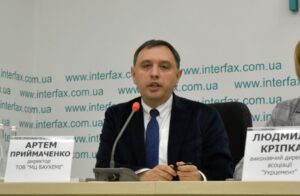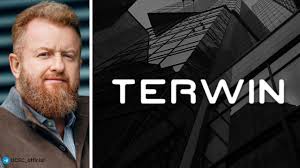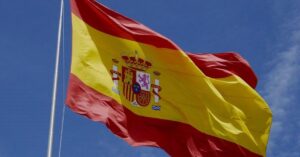
German MC-Bauchemie intends to invest EUR 1.5 mln in the expansion of dry construction mixtures production in Berezan (Kiev region), MC-Bauchemie Ukraine director Artem Priymachenko told Interfax-Ukraine agency.
“We intend to build a new line for special construction materials, such as a variety of polymer-cement mixes for structural repair of concrete, toppings for industrial floors, waterproofing materials, highly functional adhesives for tiles. The approximate volume of investments is EUR 1.5 mln,” he said.
According to Priymachenko, the investments will be made at the expense of MC-Bauchemie’s own funds. The discussion of war risk insurance is underway now.
“We are now in the procedure of obtaining a guarantee from international organizations for military risks. We are considering options – the German government or MIGA from the World Bank,” he said.
According to the company’s plans, the new line in Berezan could be launched at the end of 2025.
Founded in 1961, MC-Bauchemie Group is one of the leading international producers of construction chemicals and technologies. With more than 2,500 employees, it is represented in more than 50 countries.
According to the data of opendatabot, LLC “MC-Bauchemie” (33482370) was founded in 2005, authorized capital 333,8 thousand UAH. Revenue in 2023 356 million 836 thousand UAH, which is 2.6 times higher than the results of 2022 and 9% higher than pre-war 2021. Net profit for 2023 UAH 55 million 618 thousand, in 2022 there was a net loss of UAH 18 million 625 thousand.
construction mixtures, INVESTMENTS, KYIV REGION, MC-Bauchemie

The Steering Board of the Ukraine Investment Framework, set up by the EU on April 17 under the Ukraine Facility instrument, has allocated more than EUR1bn of funding to de-risk investments, mainly of small and medium-sized enterprises in Ukraine, through International Financial Institutions (IFIs) and banks, Ukraine’s Deputy Economy Minister Oleksiy Sobolev said.
“That is, this year, financing for SME development will be enough,” he said at Ukraine’s Future Summit in Brussels on April 18.
Sobolev called for more active trade and joint ventures with Ukrainian companies, because the above mechanism will provide leverage and additional guarantees.
“Thanks to the Ukraine Plan and Ukraine Facility, you will have available financing for business expansion in Ukraine, and what we need right now will be available. This year it will be available through Ukrainian banks and through MFIs: EBRD, EIB, IFC, KfW”, – said the Deputy Minister of Economy.
He specified that about 20 Ukrainian banks participate in these programs.
“So, in fact, you can apply to your Ukrainian bank, and he will provide additional financing to your companies,” – explained Sobolev.

Business can cope with the problem of staff shortage in Ukraine by investing in technological products and process automation, says Ruslan Shostak, owner of Eva and Varus chains and president of TERWIN Corporation.
“I don’t see a big problem (with staff shortage). Yes, it exists, you can’t turn a blind eye to it, but according to statistics, not so many people left Ukraine. Our whole business was inefficient in terms of human resource utilization, which made us uncompetitive with similar businesses in Europe and the world. But there is one solution for this: money. We don’t have money to reconstruct our production facilities and enterprises. If we have money, software products, new robotic equipment, we will be able to solve this issue,” Shostak told Business Wisdom Summit in Kyiv on Wednesday.
According to Shostak, despite a slight outflow of customers, his business is showing growth: last year’s growth was almost 100% in online and 30% in retail. In addition, new logistics hubs are being built in Kyiv, Lviv, and Dnipro.
Shostak noted, while in Ukraine business development is slowed down due to the war and difficult economic situation, global business is undergoing changes and using new opportunities, including artificial intelligence.
“Now we are focusing on geopolitics, but in the next 20 years we will face global economic problems, change of specialties, professions. It is artificial intelligence that is driving the most powerful changes right now,” Shostak believes.
As reported, in October 2023, 17 companies managed by Shostak, which collectively employ 30 thousand people, merged into TERWIN (TERWIN). We are talking about Omega LLC, Rush, Tervin Group, Tixid, Tavria Hub, Instant, Formsite, Digamma, Milton Group, Saltora Plus, Firma Ariant, New Construction 2017, Altair D, Apex N, Aspect D, Lattero, Charitable Foundation Ruslan Shostak BU. The total assets of the corporation are estimated at $1.6 billion. The combined revenue of the companies reached $2 billion in the pre-war period and was expected to reach $1.7 billion in 2023.
In November 2023, Shostak and UkraineInvest CEO Serhiy Tsivkach signed a memorandum on further support of the project for the construction of logistics hubs in four regions of Ukraine (Odessa, Lviv, Dnipropetrovsk, Kyiv) with a total investment of more than $500 million.
BUSINESS, INVESTMENTS, staff shortage, TECHNOLOGIES, TERWIN Corporation, UKRAINE

The Spanish government intends to cancel the program that provides foreigners with “golden visas” in exchange for real estate investments, the Financial Times reports, citing a statement by Spanish Prime Minister Pedro Sanchez.
Currently, citizens of non-EU countries can obtain a Spanish residence permit for a period of three years by investing at least EUR 500 thousand in real estate in the country.
The abolition of the program will improve the situation with the availability of housing in Spain, Sanchez said.
“Currently, 94 out of 100 of these visas are issued for real estate investments in large cities that are already facing a very difficult market. Those who already live there, work and pay taxes, can hardly find decent housing,” the prime minister said.

At a meeting on Friday, the government approved a procedure for providing compensation for the cost of engineering and transport infrastructure built by an applicant/investor with significant investments and the costs of connection and connection to engineering and transport networks necessary for project implementation.
“…approved the last regulatory document necessary to launch the mechanism of state support for projects with significant investments. Investors who are ready to implement projects in Ukraine worth EUR 12 million or more will receive maximum assistance and support from us in the form of support, tax and customs benefits, compensation for the cost of constructed engineering and transport infrastructure facilities or connection to engineering and transport networks, etc.”, the release of the Ministry of Economy quotes First Deputy Prime Minister and Minister of Economy Yulia Svyrydenko.
She added that this year the state budget has allocated UAH 3 billion to support such investors.
The Ministry of Economy clarified that investors who plan to implement a project in Ukraine worth EUR 12 million or more with a duration of up to 5 years in the areas of processing industry, mining for further processing or enrichment, transport, logistics, education, research, healthcare, waste management, art, culture, tourism, sports, and electronic communications will be able to receive state support.
To receive support, the applicant (a resident or non-resident legal entity) must submit an application to the Ministry of Economy together with the relevant documents for the evaluation of a project with significant investments, after which the Ministry must evaluate the investment project and provide an opinion on the feasibility/inefficiency of its implementation and the conclusion of a special investment agreement or refusal to conclude it.
After that, a special investment agreement will be concluded between the Cabinet of Ministers, a local government body (if state support is provided by such a body for the implementation of a project with significant investments), an investor with significant investments, and the applicant.
In addition, to support the preparation and implementation of an investment project with significant investments, the applicant must contact UkraineInvest for information and advisory assistance.
The Ministry of Economy emphasized that investors can receive several types of support from the state, which amount to up to 30% of the amount of an investment project with significant investments, in particular: the preemptive right to use state or communal land plots, compensation for the cost of building engineering and transport infrastructure and the cost of connecting to engineering and transport networks, tax benefits, duty-free import of necessary equipment, as well as exemption from compensation for forestry losses and other costs.
According to the report, projects should include the construction, modernization, technical or technological re-equipment of the relevant investment objects and the creation of new jobs. The investor needs to create at least 10 jobs with a salary at least 50% higher than the average salary in the region for this type of activity, or 30 jobs with a salary at least 30% higher than the average salary in the region for this type of activity, or 50 jobs with a salary at least 15% higher than the average salary in the region for the same type of activity.

Ukraine intends to create an Investment Attraction Agency as a single entry point for investors in the Ukrainian private sector, First Deputy Prime Minister Yuliya Sviridenko said on Facebook.
“To ensure that all investors wishing to invest in the private sector in Ukraine have a single point of entry, we are working on the launch of a single institution – the Investment Attraction Agency,” she wrote following a visit to London, where she discussed its creation, including with the London Stock Exchange (LSE).
According to her, during the meeting, LSE specialists assured that they are ready to provide their expertise and help build this institution.
Sviridenko said she also met with British International Investment, which last summer at a conference on Ukraine’s reconstruction in London said it was ready to allocate GBP250 million to finance the private sector in Ukraine, mainly for post-war reconstruction.
“These funds will be available from April through the Co-investment platform. What can we do together with the private sector already now to get this funding? Prepare quality projects. For this purpose we also attract partners to jointly do feasibility study, “- First Deputy Prime Minister said.
She added that attracting investment and financing to Ukraine was also the main topic of negotiations with the European Bank for Reconstruction and Development, the London Stock Exchange and TheCityUK, UK Export Finance (UKEF).
“We are working with UKEF to attract investments in the defense sector. We have also opened a GBP3.5bn limit for Ukraine. Several companies have already received insurance, one of them yesterday during our visit to London. We plan to expand cooperation, in particular, we discussed the possibility of insuring suppliers of equipment in the field of military demining,” Sviridenko wrote, in particular.